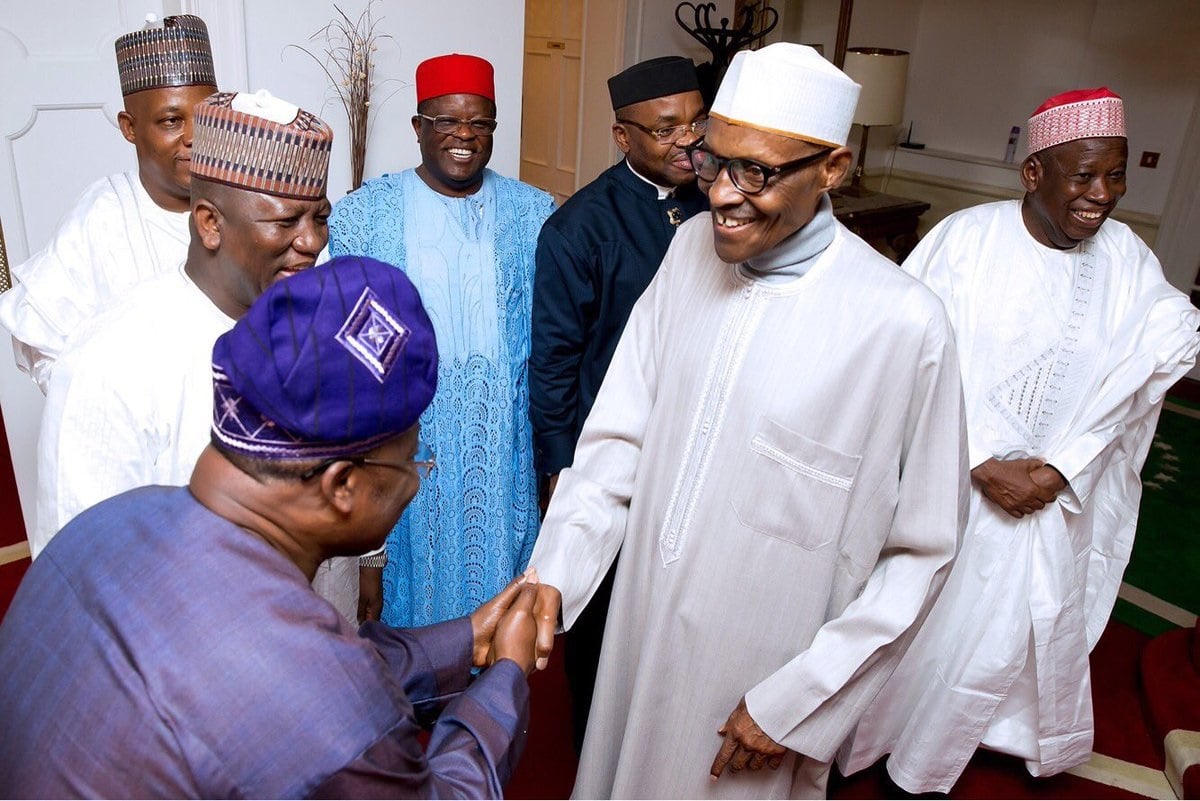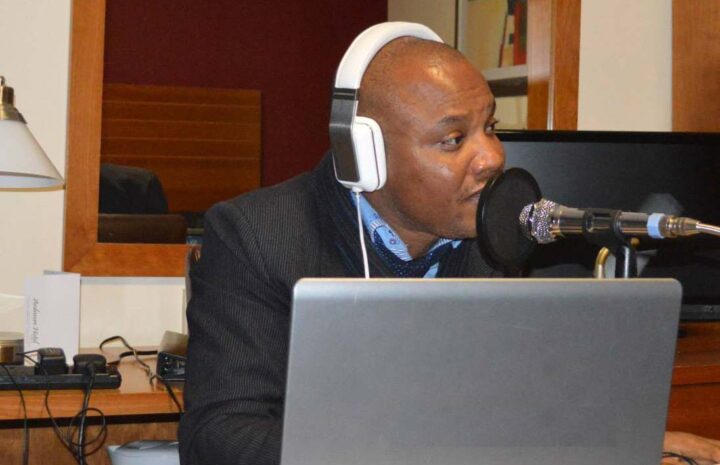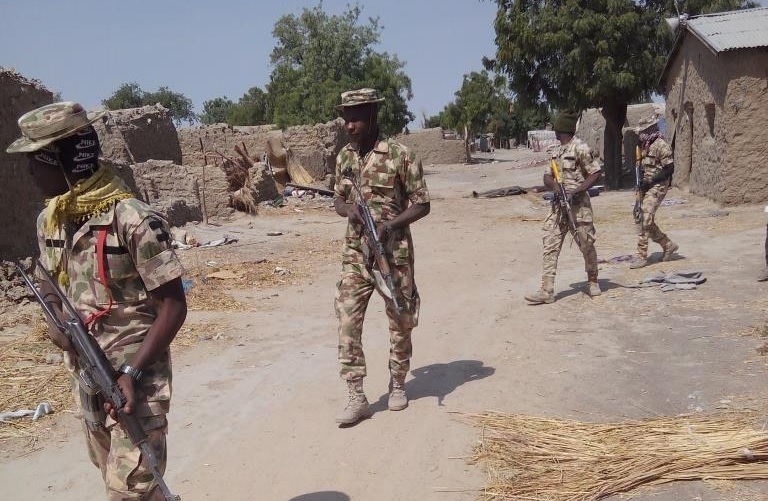By Kole Shettima
The world converged in Oslo on 24th February 2017 in solidarity with the people of the Northeast of Nigeria and the Lake Chad Basin region who were, until recently, under the threat of Boko Haram annihilation. The conveners of the Oslo meeting, who put the figure of Nigerians living in the affected areas as no fewer than 26 million, underscored the gravity of the situation.
According to their report, “The Humanitarian Response Plans identify 10.7 million people in need of life-saving assistance in the most affected areas in Cameroon, Chad, Niger and Nigeria. Over 7 million people are struggling with food security, with children representing a majority of those in need. About 2.3 million people are displaced, a number that has tripled over the last two years”. Boko Haram is estimated to have killed more than 20,000 persons but the unofficial number is much higher. Also, this number doesn’t include those killed by security agencies and BH in unidentified mass graves.
Even though the target was $1.5 billion, it is indeed heartwarming that more than $672 million was raised in pledges. The hosts, the Norwegians, are the biggest supporters. The Nigerian government is expected to commit $1 billion.
When fully operational, the funds will help meet immediate humanitarian needs as well as long-term development and reconstruction purposes. The Borno State Government, the epicenter for the conflict, has a Ministry for Reconstruction, Rehabilitation and Resettlement. Other states governments are using similar frameworks to improve the quality of lives of their citizens. However, I am very concerned that the passion for uplifting the people of the northeast and the Lake Chad Basin region hasn’t allowed for an opportunity to reflect on the concept of ‘development’ being promoted by governments and international agencies.
Advertisement
Historically, the people of the region have some of the worst indicators in terms of maternal mortality, girls’ education, literacy, status of women, infrastructure and poverty among others. The situation has been worsened as a result of years of Boko Haram violence. That explains why we need to ask some salient questions as we seek to move forward: Did the gaps in previous ‘development’ initiatives contribute to the rise and growth of Boko Haram? Are there things we did wrong in key sectors such as education, health, housing, and agriculture that might have contributed to the structural problems that led to the insurgency? How has ‘modernization’ undermined ‘development’?
While I cannot claim to have answers for any of those posers, I am nonetheless uncomfortable that we are ‘doing development’ as before even without asking whether we are on the right course. And if we conclude that we are, that must be based on deeper reflections.
As things stand today, literacy in the North east region is dismal. The West African Examination Council (WASC) result for this year is evidence of the poor quality of education with all the states in region among the worst ten. But it is also no surprise. In Borno State, for instance, more than half of the children of school age are roaming the streets while about 60% of the schools have been closed.
Advertisement
However, we cannot blame Boko Haram for all the problems. Even before the insurgency, the educational situation was a mess. Northern Borno in particular was worse. Fewer than 10 students scored five credits with English and Mathematics in the years preceding the Boko Haram insurgency.
Given the foregoing, the question we should ask is whether it makes sense to rebuild these schools without considering other models or processes of education with the kind of results posted in recent years. The important question here is: Should we continue to follow the same curriculum and the process of education delivery that enabled less than one percent of the student population to qualify for university education?
What is more worrying is that the situation was not always like that in the region. I was fortunate to attend school partly because of the influence and authority of traditional and religious institutions. They had a supervisory role over schools and parents were fined if they refused to send their children/wards to school or withdraw them once enrolled. I know of communities that migrated from the jurisdiction of our Mai to neighboring states because they refused to send their children to school. In those days, the Chief Imam used to visit primary schools as a symbol of support. Unfortunately, ‘modernity’ and administrative restructuring has eroded their roles.
Today, schools are under the supervision of local government authorities and the ‘elected’ officials only visit their capitals at the end of the month when salaries are due. These absentee officials also don’t have their children in any of these schools. So, they really do not care about whether or not the children at the local level have any education. Therefore, the quality of monitoring is compromised by indifference and corruption.
Advertisement
If we must change the narrative, we should begin from the curriculum of our schools. Clearly, we cannot produce the leaders of tomorrow based on yesterday’s manual. The world is moving to skill and activity-based education and for us to provide 21st century skills to our young people, our thinking must also change. We want young people to be able to ask questions rather than take everything they hear from their teachers as the gospel truth, which is a path to extremism. What can we salvage from the days of craft schools and women teachers college? Should we adopt or adapt a national curriculum?
I am well aware that many parents clamor for curriculum that provides Islamic and secular education. That accounts for the popularity of alternative schools like ‘Baba Buji Modern Tsangaya School Bolori’; ‘Mallam Goni Garba Buzu Tsangaya’; ‘Future Prowess’, and ‘El-Kanemi School of Theology’ among others. But against the background that millions of children are out of school in Nigeria, doesn’t it make sense to adopt a hybrid curriculum that meets both the desire of parents and the needs of the 21st Century? This will enable the region to leverage the opportunity of reconstruction and ‘development’ to take on board the needs of the region.
Going forward, it is very clear that governments will be unable to provide education for all the children out of school and the private sector can make a great contribution. The best approach would be for governments and development partners to consider bulk grants to private proprietors, rather than worry about rebuilding every infrastructure, which has not helped. There are even models that we can reference.
The former Governor of Anambra State, Mr. Peter Obi, returned schools to missionaries and supported them with financial resources for several years. The state is the better for it today in terms of the performance of the students. Therefore, the current situation is an “opportunity” to rethink our approach to education in the region. Focus, innovation and political will are the tripod upon which the options adapted should stand and grow the region’s human capital base.
Advertisement
These should be scaled up and replicated in forms that meet the deficits in content/curriculum and outputs; low grade human capital. Innovation is needed to respond to the region’s peculiarities while the conflict is transiting to fragile peace. These will be indexed among other things by a departure from the norm to allow for aggressive drive for girl child education and women empowerment. This is particularly critical to reconstruction because gender is implicated in the underdevelopment and structural problems of the region.
The structural discrimination of females underscores the structural problems of the region. On every indicator the status of women is appalling: age at marriage, maternal mortality, girls’ education, political representation, rate of divorce, employment, access to health care and other social services, and finance and capital.
Advertisement
However, there are several questions still begging for answers: How about if we conceptualize development with gender inclusion and empowerment as the central focus? What kind of programs and projects will be prioritized? How do we have projects that challenge gender stereotypes? Do we want to continue funding knitting; sewing and soap making projects that reinforce these stereotypes? For sure, a definite departure is needed to expose and incentivize women to ‘venture’ into technology as a tool for organizing and access to entrepreneurship opportunities for growing new and high yielding economic activities.
Related to gender inequality is the fact that the gap between the rich and poor is increasing, and those who are poor in the region are experiencing three bas: kasuwu ba (no business), kra ba (no education) and bare ba (no farming). The Boko Haram violence has worsened inequality in the region. The reality also is that those who have access to resources have become richer even within the insurgency ravaging the region. For instance, in the midst of over 50,000 orphans in Maiduguri are newly built and freshly painted buildings, SUVs and other bullet-proof vehicles. The humanitarian economy has contributed to a colony of rich amid a vast ocean of the poor. The business of livestock and fishing is now the monopoly of major actors to the conflict on both sides.
Advertisement
Problems of accountability are being raised around many of the projects implemented by national and international agencies in the North East. Probably the most pronounced is the suspension of the Secretary to the Government of the Federation over allegations of corruption. Many other agencies are not much better. International organizations are being accused of spending significant funds on themselves rather than on the victims.
I am of the view that the situation in the Lake Chad region provides us an opportunity for a new beginning as we need a new framework for development. If the past contributed to the emergence of Boko Haram, why then must we spend the scarce resources of the good people of other countries to perpetuate structural inequality and underdevelopment? Did someone not say that a classical definition of insanity is to continue doing the same thing and expect different results?
Advertisement
I am hoping that the fact that Norway is leading the pack in Human Development Index (HDI) and the Northeast region which could have been amongst the bottom five in HDI if it were a country should influence our thoughts on ‘development’.
The North East recovery and development must be a model that elicits confidence and all the critical stakeholders have a moral obligation to do the right thing. The approach therefore needs to be radical enough to stimulate a reawakening where all the actors agree that a return to the status quo ante is not an option.
Shettima, director of the MacArthur Foundation, wrote from Abuja. The views expressed are his and not that of his employers.
Views expressed by contributors are strictly personal and not of TheCable.
3 comments







putting the problems and the solutions together with a clear examples, is what I wanted to hear of, and, may God accept our prayers as we see the positive result, thank you sir for the clarifications
Wonderful insight. But will the government and the leaders do the right thing?
Kole Shettima offers a fresh perspective to the crises in the North-East. His article opens our eyes to the grim realities of the region. The government, international development partners, civil society and other actors must pay attention to his perceptive suggestions and change their strategy .